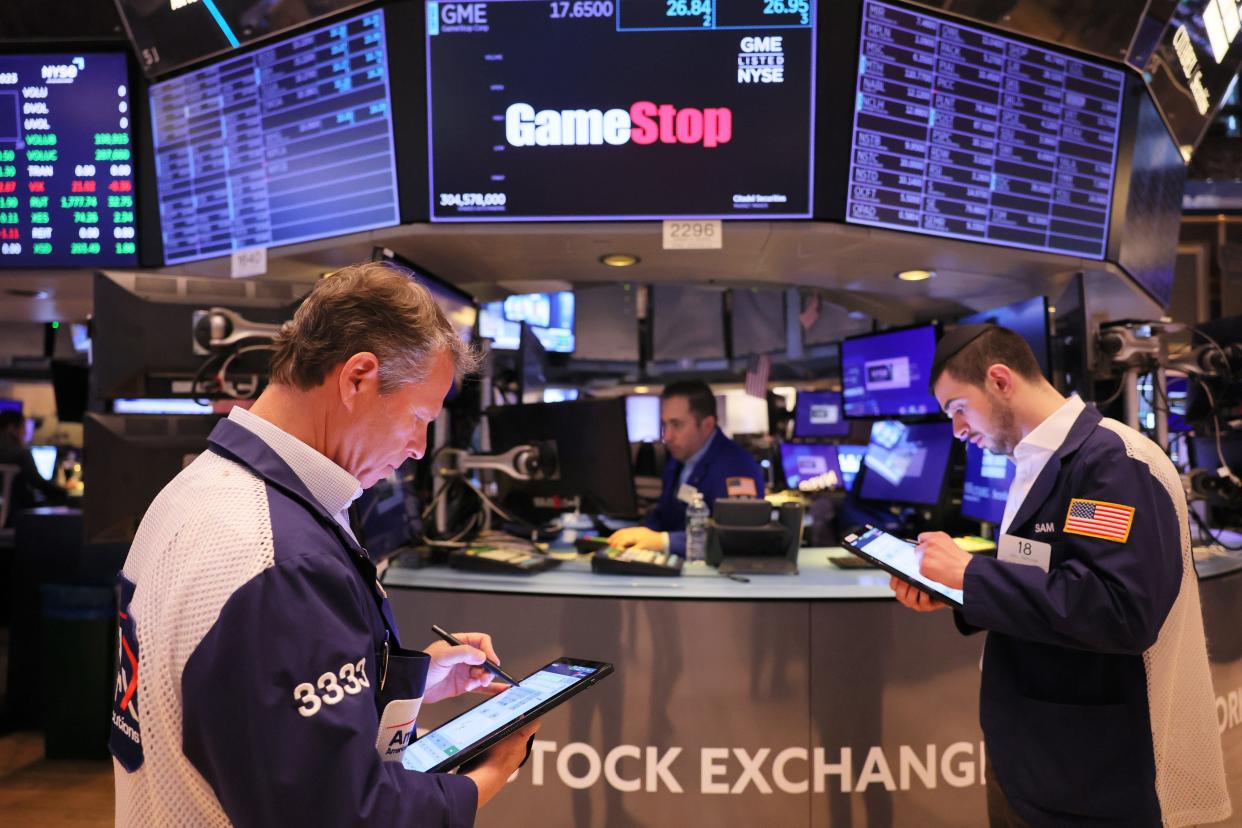Fed could delay cutting interest rates until September, based on March's hot inflation
Consumers who were hoping to see interest rates start to drop on their credit cards could need to wait a few months longer for the first rate cut of 2024, thanks to higher than expected inflation in March.
The consumer price index rose 3.5% year over year in March, according to data released Wednesday by the U.S. Bureau of Labor Statistics. That's up from the 3.2% increase year-over-year number for February. February was viewed as a hot month when it came to inflation; and now the same is true for March.
Economists at KPMG called it the "spring heat wave."
On a month-to-month basis, inflation rose 0.4% in March, the same as February's level.
During the early months of 2024, inflation has proven to be more stubborn than some analysts had anticipated.
Stock prices tumbled Wednesday as traders tried to judge how the latest inflation report might offer some clues to the path of future rate cuts by the Federal Reserve.
The Dow Jones Industrial Average was down 422.16 points or 1.09% and closed at 38,461.51 points Wednesday.

Just a few weeks ago, many economists had expected the Federal Reserve to start cutting interest rates in June. The two-day Fed meeting will be held June 11 and June 12.
But higher-than-expected inflation numbers for March now make it more likely that the first rate cut will hit in September, not June, said Mark Zandi, chief economist for Moody's, after the latest CPI data was released. A two-day Fed meeting is scheduled for Sept. 17 and Sept. 18.
"Inflation continues to moderate, but too slowly to convince Fed officials that it is headed back to their target in a timely enough way," Zandi told the Detroit Free Press on Wednesday.
Kenneth Kim, senior economist at KPMG, wrote in a report Wednesday that inflation in the service sector is becoming more entrenched.
Kim concluded: "Our forecast for a rate cut was recently changed to September from June and the number of cuts reduced to two from three in 2024. In the absence of a notable improvement in inflation in the coming months, the Fed may only cut once this year. Market participants have thrown in the towel for a June easing after today’s CPI report."
More: What should investors expect in the stock market in light of the 2024 solar eclipse?
More: Fed keeps interest rates high at March meeting and Wall Street hits record highs
The Fed's target inflation level remains at 2% over the longer run. At its March meeting, the Fed held rates steady, indicating that "inflation has eased over the past year but remains elevated."
It should be no surprise to consumers who continue to dine out that one area where prices are spiking remains a category called "food away from home," which was up 4.2% in March year over year. The "food at home" category was up 1.2% year over year in March.
The month-to-month data for the food index showed a 0.1% increase in March. The food at home index was unchanged, while the food away from home index rose 0.3% over the month.
On a month-to-month basis, the Bureau of Labor Statistics noted, two areas combined — the index for shelter and the index for gasoline — contributed more than half of the monthly increase in the CPI for all items. Shelter rose 0.4% month over month in March; gasoline rose 1.7% month over month.
"With oil prices now marching higher, energy costs will be taking an ever-increasing bite out of household budgets in the months to come," said PNC senior economist Kurt Rankin in a statement.
He said energy prices are not part of the core CPI metric that aligns with the Federal Reserve’s inflation target. But Rankin noted that "energy prices are nonetheless influential on the health of household balance sheets — especially as more workers have resumed a regular commute for in-office work."
"Higher energy prices remain inescapable both at home and on the road," Rankin said, "leaving less disposable income for households to support consumer spending and likely forcing further credit card debt accumulation in order to maintain spending habits."
Consumers might not expect much relief when going out to dinner, either.
"Consumer demand for takeout that consistently matches and outpaces overall retail spending — despite far weaker price trends for groceries — will allow restaurants to continue to hike menu prices," Rankin said.
Rankin noted in his report that PNC continues to forecast three rate cuts in 2024 in June, September and December. But he said the March inflation adds to mounting evidence that could indicate that the outlook could be too optimistic.
Contact personal finance columnist Susan Tompor: stompor@freepress.com. Follow her on X (Twitter) @tompor.
This article originally appeared on Detroit Free Press: Hot inflation means Fed could delay interest rate cut until September
